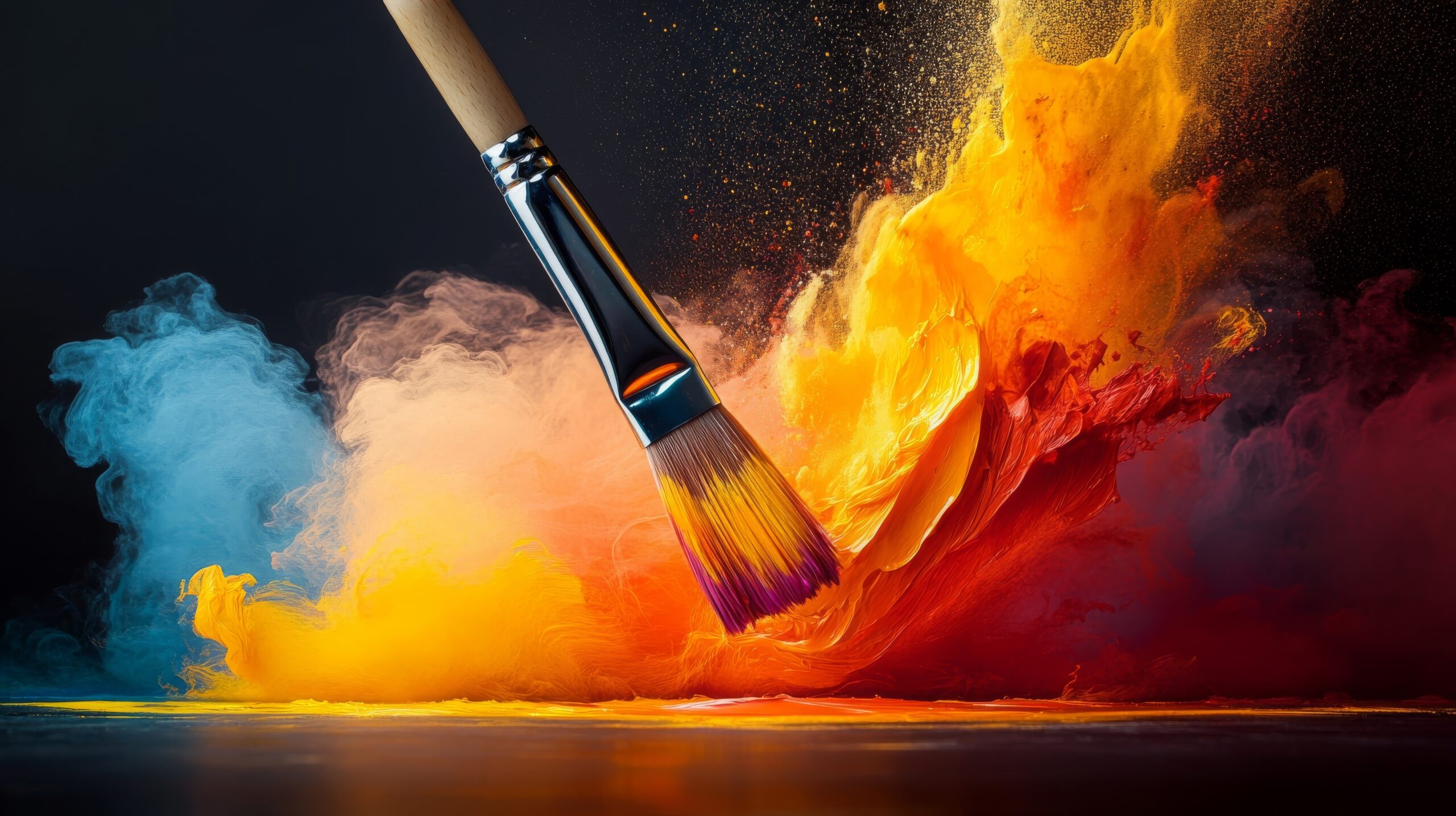The Connection Between Art and Music
Art and music have always been intertwined, both serving as powerful forms of self-expression. As a painter, I’ve found that the rhythm of music directly influences the way I move my brush across the canvas. Whether I’m listening to the soothing melodies of a classical piece or the energetic beats of jazz, the music I immerse myself in shapes the mood, energy, and movement of my artwork. The relationship between sound and visual art is something I continue to explore, and it has transformed the way I approach my creative process.
Painting to a Beat: How Music Shapes Brushstrokes
When I play music while I paint, I find that my strokes naturally mimic the rhythm of the song. Slow, melodic tunes lead to longer, sweeping movements, while fast-paced beats inspire quick, expressive marks. The tempo becomes a guide, allowing me to translate sound into visual energy.
For example, when I listen to classical music, I notice that my brushstrokes become more fluid and intentional, almost like a graceful dance. On the other hand, if I put on a lively jazz track, my strokes take on a playful, spontaneous quality, filled with short dashes and bursts of color. Music becomes a silent collaborator in my work, influencing the motion and mood of each piece.
Movement in Art: The Dance of the Brush
Beyond music, movement itself plays a crucial role in how I paint. Sometimes, I work standing up, allowing my entire body to engage in the process. This creates a sense of freedom, where I can step back, observe, and respond to the painting in a more physical way.
There are times when I let my arm flow freely, almost like a conductor leading an orchestra, guiding the composition with rhythmic strokes. Other times, I use deliberate, controlled motions to create texture and contrast. This connection between movement and brushwork adds an element of spontaneity to my paintings, making them feel alive and dynamic.
Expressing Emotion Through Motion
Just as music conveys emotion through melody and tempo, brushstrokes carry emotion through their movement and intensity. A gentle, wispy stroke might suggest calmness or nostalgia, while a bold, forceful stroke can communicate excitement or urgency. The way paint is applied—whether it’s softly blended or thickly textured—adds another layer of feeling to the piece.
When I’m deeply immersed in my work, I don’t just see the painting—I feel it. My emotions dictate my movements, and the canvas becomes a reflection of my inner state. This is why no two paintings of mine ever feel the same; each one is an honest expression of a moment in time.
Experimenting with Different Musical Genres
To push my creativity further, I often experiment with different musical genres while painting. Classical music helps me focus on detail and refinement, while rock or blues encourages a raw, expressive energy. Sometimes, I challenge myself by painting to a style of music I wouldn’t normally listen to, just to see how it influences my work.
For those looking to incorporate music into their creative process, I recommend trying:
- Instrumental music for deep concentration and flow
- Upbeat rhythms for high-energy, expressive strokes
- Ambient sounds for a meditative, introspective approach
- Cultural or world music to inspire unique patterns and color combinations
Each genre offers a different experience, allowing for new discoveries in artistic expression.
The Role of Silence in Creativity
While music is a huge source of inspiration, I also recognize the importance of silence. There are moments when I need complete stillness to connect fully with my work. In these quiet moments, I focus purely on the motion of my brush, the texture of the paint, and the composition unfolding before me. Silence allows me to tune in to the rhythm of my own thoughts and instincts, making room for deeper artistic exploration.
Bringing Music and Movement into Your Art Practice
For those wanting to explore the connection between music, movement, and art, here are some ways to start:
- Create a playlist that matches the mood of your painting.
- Experiment with different tempos to see how they affect your brushstrokes.
- Try painting while standing and moving to engage your whole body.
- Switch up your tools—use a palette knife, sponge, or even your fingers to enhance the sense of movement.
- Let go of expectations and allow the music to guide your strokes naturally.
The Endless Dance of Art and Sound
Art, like music, is a language that transcends boundaries. Both have rhythm, flow, and emotion at their core. When I paint, I embrace the natural connection between sound and motion, allowing them to shape my creative expression in ways that feel organic and deeply personal.
Whether through the gentle sway of a brush or the bold impact of a thick stroke, the rhythm of art is ever-present. By opening ourselves to the influence of music and movement, we allow our work to take on a life of its own—one that is fluid, expressive, and beautifully unpredictable.
